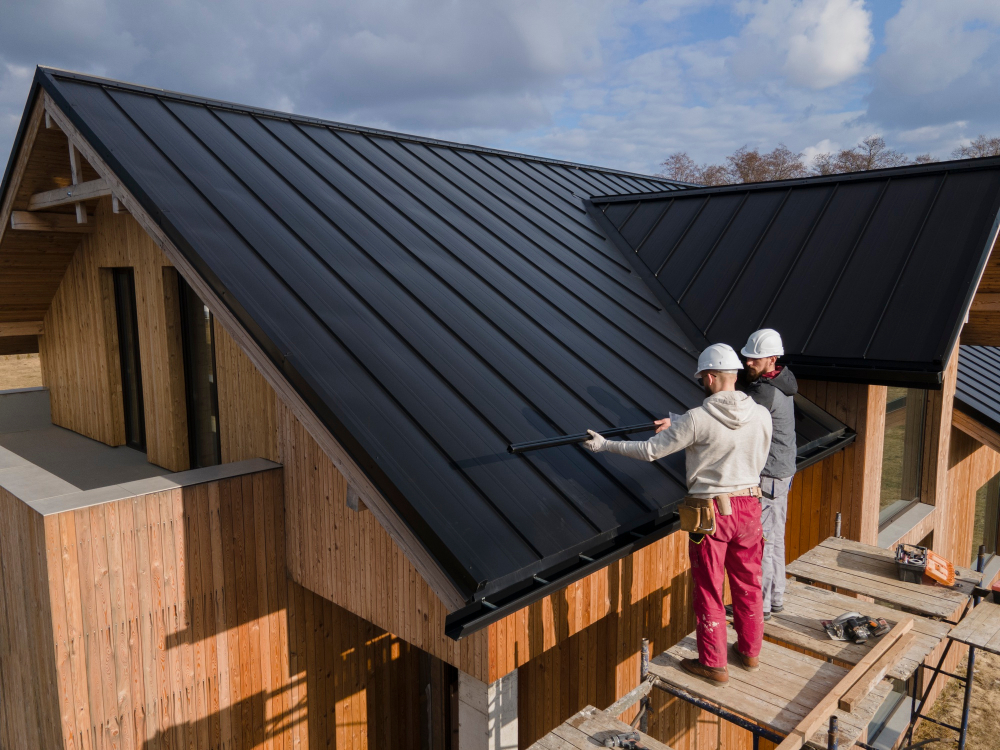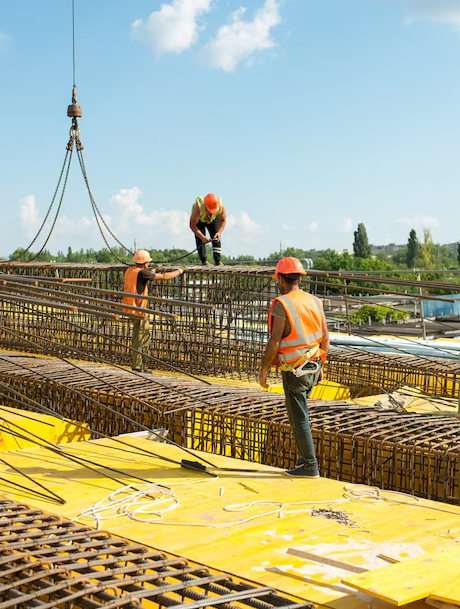
19
May 2025
The Advantages of Prefabricated Buildings compared traditional Construction; a case study
In the rapidly evolving construction industry, prefabricated (prefab) buildings are emerging as a game-changing alternative to traditional construction methods. By manufacturing building components off-site and assembling them on location, prefabrication offers significant cost, time, and sustainability benefits. Below, we explore why prefab construction is becoming the preferred choice for modern infrastructure projects.
- Faster Construction & Reduced Timelines
Speed of Assembly: Prefab buildings are manufactured in controlled factory environments while site preparation occurs simultaneously. This parallel workflow reduces construction time by 30–50% compared to traditional methods.
Weather-Independent: Since most components are built indoors, weather delays are minimized, ensuring predictable project completion.
- Cost Efficiency & Budget Control
Lower Labour Costs: Prefab construction requires fewer on-site workers, reducing labour expenses.
Material Savings: Factories optimize material usage, minimizing waste and bulk purchasing discounts.
Reduced Overheads: Faster completion means lower financing and supervision costs.
- Superior Quality & Precision
Factory-Controlled Production: Components are built under strict quality checks, ensuring consistency and durability.
Advanced Technology: CNC machines, 3D modelling, and automation enhance precision in prefab construction.
Fewer Defects: Unlike on-site construction, factory settings prevent weather-related damage (e.g., moisture in concrete).
- Sustainability & Eco-Friendliness
Less Waste: Prefab generates up to 90% less construction waste due to precise material cutting and recycling.
Energy Efficient: Many prefab buildings incorporate green materials and better insulation, reducing long-term energy consumption.
Reusable Components: Modular designs allow for easy disassembly and relocation, supporting circular economy principles.
- Flexibility & Scalability
Easy Expansion: Modular buildings can be quickly expanded or reconfigured as needs change.
Customization: Modern prefab designs offer aesthetic flexibility, debunking the myth that modular buildings look “boxy.”
Portability: Some prefab structures can be relocated, making them ideal for temporary facilities.
- Enhanced Safety
Reduced On-Site Risks: Fewer workers are exposed to hazardous conditions (e.g., heights, heavy machinery).
Sturdy Engineering: Prefab structures often exceed traditional building codes due to rigorous factory testing.
- Ideal for Remote & Urban Areas
Remote Locations: Prefab is perfect for areas with limited construction resources, as most work is done off-site.
Urban Projects: Minimizes disruption in crowded cities by reducing noise, dust, and traffic blockages.
Prefab vs. Traditional Construction:
Case Study of an Industrial Warehouse in Bihar
Project Overview
Location: Bihar
Client: Agro-Processing Unit (Food Storage & Logistics)
Built Area: 50,000 sq.ft.
Construction Methods Compared:
- Prefabricated Steel Structure
- Traditional RCC (Reinforced Cement Concrete)
Key Comparison Metrics
| Parameter | Prefab Warehouse | Traditional RCC Warehouse | Advantage |
| Construction Time | 3.5 months | 9–12 months | 65% faster |
| Total Cost | ₹3.2 Crore | ₹4.8 Crore | 33% cheaper |
| Labour Required | 15 workers (peak) | 40+ workers | 60% less labour |
| Material Waste | <7% (recycled steel) | ~30% (cement, sand waste) | More sustainable |
| Weather Dependency | Monsoon-proof (factory-made parts) | Monsoon delays (3–4 months/year) | No downtime |
| Future Expansion | Easy bolt-on extension | Costly demolition & rebuild | Scalable |
Why Prefab Was Chosen?
1. Speed – Critical for Agri-Storage Deadlines
- Bihar’s kharif harvest season(Oct–Nov) required rapid storage setup.
- Prefab allowed pre-monsoon manufacturing(May–June) and post-monsoon assembly (Oct).
- Traditional construction would have missed the harvest window due to monsoon stoppages.
2. Cost Savings – Aligns with MSME Budgets
- Steel vs. Cement Costs: Bihar’s cement prices fluctuate (+22% in 2023), while steel remained stable.
- No Shuttering Costs: Prefab eliminated ₹18 lakhs in plywood/Scaffolding expenses.
3. Durability – High Humidity Resistance
- Prefab used galvanized steel frames(anti-rust coating), ideal for Bihar’s 80%+ humidity.
- Traditional RCC needed additional waterproofing(₹5 lakhs extra).
4. Govt. Subsidy Benefits
- Bihar Industrial Policy 2023offered 15% subsidy for prefab industrial units.
- GST Input Crediton prefab materials (12%) vs. traditional (18%).
Challenges & Solutions
| Challenge | Solution |
| Local Labour Unfamiliarity | Trained 30+ workers via Bihar Skill Mission (3-week module). |
| Land Levelling Issues | Opted for adjustable screw piles (no need for deep excavation). |
Post-Construction Outcomes
Operational 6 Months Earlier → Enabled ₹1.8 Crore additional revenue from early storage contracts.
Energy Efficiency → Prefab’s insulated panels reduced cooling costs by 20% (critical for food storage).
Disaster Resilience → Withstood 2023 Bihar floods (no damage vs. nearby RCC cracks).
Industry Insights for Bihar
- Rising Demand: Patna’s logistics parksnow prefer prefab for cold storage & warehouses.
- Labour Shift: 55% of contractorsin Bihar now trained in prefab (vs. 15% in 2020).
- Policy Support: Bihar Urban Development Authority (BUDA)fast-tracks prefab project approvals.
Conclusion: The Future of Construction
Prefabricated buildings offer speed; cost savings, sustainability, and innovation—advantages that traditional methods struggle to match. As technology advances, prefab construction is poised to dominate residential, commercial, and industrial projects worldwide.

